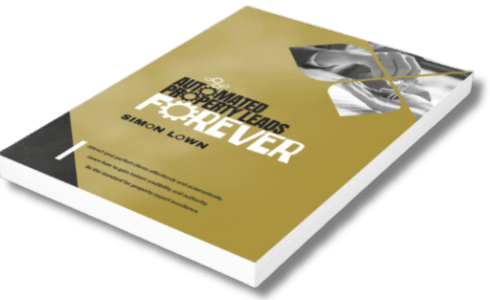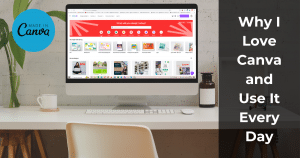Are you using Google to find images for your website, brochures, or other business content instead of using licensed Images?
If that’s you, you need to stop. Immediately.
Honestly, there’s a potential can of whoop-ass waiting just around the corner for your business if you don’t take copyrighting more seriously. I’ll cover this in detail in a bit.
Of course, great images are good for business, but not if it costs you your reputation and a ton of cash.
In this article, I’ll outline the potential dangers of illegally using images and how you can easily avoid all the hassles that come with that by changing how you get your pictures.
Let’s start at the beginning.
The Power of Visual Storytelling
It’s a well-known fact that stories are better with pictures. This is why children’s books all have pictures, and video, film, and TV are seemingly dominant everywhere you look.
I don’t know for sure, but if I had to guess, I would say more TV, Film, and video content is created daily than published words.
The phrase “A picture is worth a thousand words” didn’t come about without good reason. We have Fred R. Barnard, a 1920s advertising executive, to thank for that. I bet you thought some ancient philosopher came up with it.

No, it’s an advertising slogan because it reflects a truth we all recognise as being obvious and, well, accurate.
Most people could look at a picture and then describe what they’ve seen in a great deal of detail, some with eloquence, others maybe less so. But still, there will be no shortage of words for most.
This is why images are so important for our content.
Using high-quality and relevant images enhances our content and makes it more visually appealing.
Images are even more critical when it comes to advertising. A great image does a lot of the heavy lifting when people scroll through their feeds, and your ad pops up.
It’s rare that a fantastic headline will still work if the accompanying image is a steaming pile of… well, let’s leave that thought unfinished.
I think it’s safe to say that good imagery is a must for your content and advertising.
Let’s move onto the nitty-gritty of what you can and can’t use on your website and why.
The Legal Landscape of Image Use

Search engines have made it so easy and convenient to look up thousands of amazing images in a few seconds that you might get the impression that all images are free to use as you see fit.
This is even though there is a warning on every image that “Images may be subject to copyright” with a learn more link.
It’s almost like some people are blind to this notice as it’s ever-present. However, as we know, ignorance of the law is no excuse, and neither is ignoring it because it happens to be convenient.
Understanding Licensing
Image licensing is the legal agreement between the copyright holder and the user. Permission is granted for a set period, in a specific way, and for a particular purpose. Other requirements can be placed in the conditions for use.
Restrictions for use might require a fee, specify one-time use, attribution requirements or they might include unlimited use for an individual or company. It is always prudent to check the conditions and restrictions required for using an image.
Every image you see online is automatically copyrighted per the Berne Convention for the Protection of Literary and Artistic Works. Many Western countries follow this convention, but it is not a worldwide standard yet. It doesn’t matter whether it’s a photo from your phone, a sketch, a painting, or any other art form. If the minimum level of originality is met, the image’s creator is granted copyright protection. The copyright will remain with the original artist if it is a photo, for example, of somebody else’s work.
There are a few exceptions where you can use copyrighted materials without permission. These are fair-use exclusions for criticism, commentary, news reporting, teaching, and research. Even then, it is better to seek permission than risk copyright infringement.
Legal Consequences of Using Unlicensed Images
The best case for the illegal use of an image is receiving a cease-and-desist order allowing you to remove the image without further action being taken.
The worst case is that legal action is taken against you or your business, and monetary damages are awarded to the copyright holder. Damages could be awarded based on the profits you made from using the image and losses incurred by the copyright holder or set based on statutory damages by the court.

Should you lose the case and damages are awarded, the copyright holder will also have the right to reclaim their legal expenses. So, even should you get off lightly with a fine, the added legal fees could make it a costly day in court.
Other Consequences
In addition to the legal side, you could also face other penalties for using copyrighted material without permission.
If a search engine or social media platform detects the improper use of copyrighted images, they can take down your content. This will almost certainly impact your standing with them. Shadow bans and restricted reach are likely limited time only and something you might eventually overcome. Persistent offenders might not be so lucky.
If you have subscriptions to image libraries, you might lose access to them if you are found to be using other images illegally.
Let’s not forget the damage that your credibility will take if your business is found to be acting in an unethical manner. That alone should be enough to take this seriously.
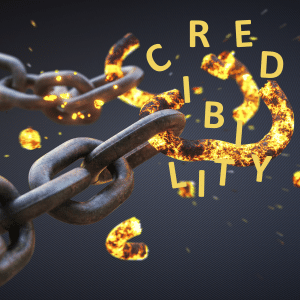
Some countries, like the USA, view persistent wilful copyright infringement for commercial gain as a criminal offence rather than a civil case. Prison time and hefty fines are a real possibility in these instances. It’s rare, but it can happen.
I must ask you, is it really worth the risk?
Yup, that is a 100% rhetorical question.
Let’s move away from the potential horrors of copyright infringement and focus on the positives.
The Benefits of Using Licensed Images
First, you get to protect your brand and reputation. There is no risk if you are using copyrighted images legally.
You avoid any potential negative publicity around copyright issues and can sleep soundly at night without any worries.
By supporting creators, you help them to continue creating premium and unique content you can use in your business.
Since premium content is often far superior to the various freely licenced images, you’ll get increased engagement and conversions—a win/win for all concerned.
As a property professional, you may want to work with professional photographers, designers, agencies, or other creative pros who also profoundly respect intellectual property and understand its value. Having a clean record on copyright issues is a must in these circumstances.
Regarding respecting intellectual property and copyright law, there really is no downside.
Types of Licenses
Let’s look at the different types of licenses and how you might be permitted to use them.

Public Domain
These are images without copyright, or the creator has made the image freely available for use for any purpose. These are often lower-quality images and have limited creativity, but that’s not always the case. They could also be from a country that does not adhere to the Berne convention, but I would argue it’s even more important to support creators from these countries.
Creative Commons
A Creative Commons license is not a standard license. It allows creators to give comprehensive access to their work but can include several variations. They might need to be attributed to the creator whenever used, disallow modification, and specify whether commercial use is allowed. Other limitations, such as share alike, no endorsements, and geographical or time-limited restrictions could be specified. What they choose to include or disallow in their licence is entirely at the creator’s discretion. It is up to you to follow the rules set by the copyright holder.
Premium Royalty Free
Where you pay a one-time fee for unlimited use, it is one of the best models, in my humble opinion. The downside is that you can’t claim exclusivity and often cannot specify the resolution or choose where and how you use the image. Some restrictions may still apply.
If you’re dealing directly with a creator, you’ll more likely be able to negotiate for exclusivity rather than getting images through an online image library. I’ll touch on this in more detail later. It is also likely that the fees will be much higher than non-exclusive use of an image.
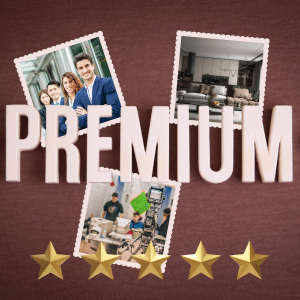
Extended Commercial
If you use an image for your business, you can often purchase an extended licence, allowing you to use it commercially. This can apply to Creative Commons images as well as royalty-free.
Royalty Based
Per-use, royalty-based fees are pretty standard, but per-impression royalties are not unheard of if an image is used in an advertisement.
A hybrid of per-use and per-impression might be agreed upon for national or international campaigns. This would likely be where a celebrity image endorsing a brand or a design is used on a product and website while being heavily promoted by the licensee.
Perpetual
Just as it sounds, a perpetual licence allows the use of an image for all time. Restrictions may still apply, so, as with all licence types, you must ensure the licence aligns with your intended use and budget.
Licence Usage

Some images will be free for personal use with a paid licence requirement for commercial usage.
We’ve already touched on images to illustrate news articles, documentaries, or other non-commercial content that informs the public. It’s worth noting that if you create “non-commercial” content but publish it on your business website, this will still be classified as commercial use, and a commercial licence will still be required.
I hope you see that using images in your business and on your website is a serious business in and of itself. You must ensure you’re not falling foul of the law through ignorance or a lack of education.
Creating Your Visual Identity
Images have long been used to help tell a story or visualise a new concept. So much of our world is enhanced by graphics, design and visual stimulation that you’d be mad not to use it to your advantage.
Brand Consistency
It may be that you have an established brand with a well-defined design and style. If so, this is great, and the images you use can be selected to complement your design and branding efforts.
If you’re just starting out or don’t yet think your brand is finalised, using imagery can help set you apart from your competitors.
What’s important is keeping up some consistency so that you are instantly recognisable.
The quality of the images you use in your content will undoubtedly impact how you are perceived. I hope you can see in this post how a few well-placed, decent-quality photos can enhance your content. I’ll talk more about how I do them soon if you aren’t already aware from other posts in which I’ve discussed my pictures.
Even though the type and style of the images I use in my content are a bit eclectic, I always try to match the image to the content, making it easy to understand a point I am trying to make at a glance. I use whatever will help get my message across; that’s my thing. It doesn’t matter if it’s text on a coloured background, a cartoon, a pro photo or a computer-generated design. If it works in that context, I’ll use it. I’ve never really understood people who use what seem to me to be random images in their content, even if they’ve “branded” the image with colours or watermarked it with a logo. Maybe it’s just me…

Tailoring Images to Your Audience
As property professionals, you can also tailor your images to your target audience. If, for example, you’re an estate agent looking for families to match to 4 or 5-bed homes, family-oriented pictures and activities will be an obvious fit to match with your perfect prospects.
People will always resonate more readily with an image if they can see themselves in the situation depicted.
It is always worth taking a little time to think about how your prospects might see themselves in any given situation and then try to match that idea with your images.
Sourcing Licensed Images
Nowadays, it is a reasonably simple endeavour to ensure the images you use are licenced for commercial application.
Every Image on this website was created using Canva with a Pro subscription. Even the photos of me were uploaded to Canva before I removed backgrounds, selected the background colours and set the resolution I wanted or downloaded the image with a transparent background.
My partner runs a business that designs and distributes leaflets. I’ve also created many ads for her clients in Canva and rarely had to make more than 1 or 2 changes after the first draft. Maybe that says something about my design skills, but I must also credit Canva for its vast library of templates.
I am not a professional designer, but with the tools available in Canva, I do a more than passable job of making ads and leaflets.
Back to the subject of Licenced Images.
With the Pro subscription, Canva gives me access to millions of high-quality images that are licenced for me to use in my business or to sell to another company. You can read Canvas Full Licencing terms HERE. It is pretty comprehensive and covers everything I need.
Canva & the Alternatives
Many other platforms provide a similar service if you’re not a Canva fan.
Here are a few:
Canva: My personal preference. 100 Million+ Images, Graphics, Videos and Sounds. There are so many templates and a growing list of Pro Tools and Add-ons.
Adobe Express: Backed by Adobe’s extensive resources, Adobe Express boasts a massive library of royalty-free images and pro tools like background removal, image resizing, and text effects.
Visme: Visme provides access to millions of free, premium images and advanced features like data visualisation tools, animation capabilities, and interactive element creation.
VistaCreate: While VistaCreate’s free plan includes a decent image library, the paid plans offer millions more royalty-free options and access to pro tools like watermarking and background removal.
There are dozens more to be found, so I won’t list them all here. A quick search on Google for “Canva Alternatives” will find most of them for you. Please do your research, try them out and see which one you like the best.
Check the licensing agreement for free and pro images; you’re nearly there.
Once you’ve chosen your favourite image creator and are happy the licence covers your business, get the pro version and access to their library of amazing pro images.
Start creating amazing stuff for your business using the images, templates, and tools, and never worry about whether you are using an image illegally again.
Stock Photo Platforms
Of course, suppose you’re already a Photoshop fan or have another favourite design tool on your PC or MAC. In that case, you’re probably already aware of other free and paid images from online sources.
If that’s not you, I’ll list a few of the more popular image sources available today. Have a search on Google, as everyone does, if you want more sites to check out.
These are the best-known and most-used sites for free images:
- Unsplash (Also has an optional subscription plan)
- Pexels
- Pixabay
- Flickr Creative Commons (Paid plan available)
You’ll find many photos under various CC licenses, allowing for specific usage terms. Remember to check the individual license of each image before using it.
These are the top sites for more exclusive paid images:
If you’ve never looked at the cost per image from Stock Photo sites before, I urge you to click the link for each paid image site above and see what they charge. I’ve set each link to go directly to the pricing page. Ranging from £1 to £375 per image, it’s not hard to imagine these companies wanting to protect their creator’s right to charge for their work or for them to get their cut.
It’s pretty lucrative.
Using a tool like Canva, which has agreements with some of these companies to provide their images, with a licence, in the pro library, makes everything so damned convenient.
Just in case you’re not convinced, let me outline some of the measures these photo library giants are taking to protect their investment.
Images Online and How They Are Protected
First, they register their entire collection with copyright offices to establish legal ownership and protection.
All their Images contain embedded metadata (invisible information) with copyright details and licensing terms. This data identifies the owner and helps track unauthorised use.
Some images might have invisible watermarks containing copyright information, another subtle level of protection but an effective indicator of ownership.
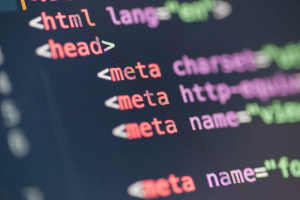
They use specialised software and services to scan the internet for unauthorised use of their images. These tools can track down websites and social media platforms displaying their images without proper licensing.
If you want to see how this works, you can try out something similar using Google’s Reverse Image Search tool. You need to click the camera icon and upload a photo. Try it with one you’ve published and see if your website or social media shows up in the list. You might be surprised.
Finally, when copyright infringement is identified, they can send cease-and-desist notices and pursue legal action, including monetary damages, by initiating court proceedings.
Wake Up Before It’s Too Late
Now, you may have heard of this new-fangled craze that’s going around called AI. The tools these companies use no doubt already utilise some form of AI; after all, it’s been around for years.
The thing is, AI is getting REALLY GOOD, REALLY FAST.
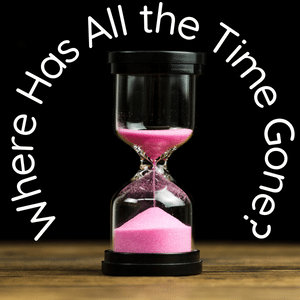
This means it’s only a matter of time, and probably not very much, before their update detection systems match legitimate users with their database and flag unauthorised use much more effectively. Oh! If you don’t think they won’t use all of the links you so kindly provided to your socials to check you haven’t used the same image Illegally several times, think again. Oh! Don’t forget, they’ll also look at every other image on your site and socials, just to make sure that’s the only image you’re not licenced for.
Please don’t become one of the “it won’t happen to little ol’ me” gang! The technology is available to ensure it almost certainly will. The technology doesn’t care how big or small you are. It’s automated, unfeeling, and doing what it’s been programmed to do.
If you aren’t using licenced images on your website and social media, I humbly suggest it’s only a matter of time before you get a tap on the shoulder and a polite request to dig into your bank account and pay for the images you’ve been using illegally.
It Doesn’t End There
Now, you might be thinking that’s a fairly comprehensive way to ensure that their images aren’t used illegally and that they get paid for their use.
But no, they go above and beyond.
Educating their Clients
Photographers sign agreements granting licensing rights to the platform and acknowledging copyright protection. The platforms have systems for their users to report any instances of copyright infringement they encounter. This means that the bigger their creator base gets, the more eyes they have on the web looking for unlicenced copies of their work.
They educate contributors and users about copyright laws and proper image usage to prevent unintentional infringement. This helps build public awareness of copyright infringement issues.
I mean, WOW. Do these guys have their bases covered, or what!!
Well, now you come to mention it, they’re not done.

Industry Initiatives
Stock photo companies participate in copyright protection organisations and advocacy groups to strengthen legal frameworks and share best practices.
Their collaborations with image recognition and tracking technology companies further improve their ability to detect and respond to copyright infringements. They’re not trying to do it all on their own.
By combining these strategies, stock photo companies strive to create a secure environment for artists to showcase their work and for users to access high-quality imagery while respecting copyright laws.
Now, does that seem like the kind of organisation, not just on the part of each company, but as an industry, where you might be able to fly under the radar and not be noticed?
Well, the technology is still emerging, and it might take some time for them to find everyone using unlicensed images. But, the law is firmly on the side of the creators, and the longer it takes for them to find you, in all likelihood, the higher the penalty will be for the prolonged use of illegal images for commercial gain.
I don’t know about you. That’s not a gamble I personally feel like taking.
Professional Photography

Whether this is something you learn and do for yourself or pay others to do for you, taking high-quality photos is a fantastic way to get original content for your company’s use online.
It’s long been recognised in the property industry that high-quality quality, professionally taken photos significantly impact sales. While this is mainly something an estate agent will be familiar with, it doesn’t end there. There are many other areas where this also applies.
You may have noticed that I’ve focused less on the property sector in this post than in many of my other posts. This is no accident. The fact is, no matter what kind of business you run and wherever in the world you run it from, these best practices around the use of images online apply.
Let’s look at an area specific to you property pros reading this.
Professional Property Photography
It doesn’t matter if you sell a home as an agent, rent it out, or make a presentation pack for investors. Professionally taken photos are going to have a positive impact on the end product.
If you sell any products, a pro product shot will make a big difference. And let’s not forget all the other types of photos that benefit from a professional’s touch. Whether you need a headshot or portraits taken, behind-the-scenes everyday images, or to capture the highlight of your events, having somebody on hand to ensure everything is done correctly will be one less stress to worry about.
Even if you’re in a position to go and get all the gear, having no idea how to use it effectively isn’t going to help you much. And yes, many cameras now use AI and have automatic modes, but they don’t replace people’s creativity.
There’s much more to consider for a professional photograph than buying the latest Canon EOS series body and a few lenses.
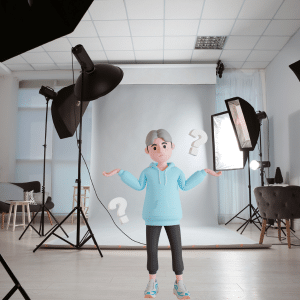
Taking A Pro Photo
There is so much to consider when taking a photo that an amateur can hardly compare to the experience of somebody who’s been practising for even a year, let alone several.
Framing your shots, ensuring good lighting and using the angles and lines of a room, for example, will come naturally to a pro. More advanced techniques like HDR will be no problem for a pro when they encounter big windows and brightly lit south-facing rooms. Using multiple lenses to ensure each room and feature is shown at its very best.
And let’s not forget the all-important post-processing. This is often where the magic happens. Exposure and colour balance can make your photos appear more natural or pop. Correcting white balance will ensure your whites look white, which is particularly important when you have multiple light sources. Noise reduction is often needed when you have low-light indoor shots, and cropping or straightening a shot can help to remove unwanted items or enhance the framing of a shot.
With so much to learn, remember, and apply, do you really want to “have a go”, or do you want to focus on doing what you’re best at and save the inordinate amount of time it will take for an amateur compared to outsourcing this crucial element to a pro?
Okay, let’s look at what you might need to consider when hiring.
Hiring Photographers and Licensing Agreements
Seeing examples of previous work will always be an excellent first stop. Does their style match what you want?
Any contract with your photographer must address the scope of work, deliverables, timeline, payment terms, and copyright ownership.
For your copyright considerations, everything we covered earlier in the ‘Types of Licences’ is on the table. Will they be exclusive, non-exclusive, perpetual, or time-limited? Since you’re paying for the photographs to be taken, extended commercial licencing and royalty-free are assumed. Still, it’s worth adding them to the contract to keep everything clear and unambiguous.
It should be noted that the default copyright for any photos taken defaults to the photographer, not the client.

Now, if you’re an estate agent, you could negotiate a better price based on repeat orders for different properties. Also, consider whether you could offer referrals, a testimonial, or a shout-out on social media.
If you’re in another part of the property industry and repeat orders aren’t a reasonable negotiating tactic, maybe you could add attribution to the photos and a link to their website. What about a collaboration, early payment, or a barter for services?
If you are open, honest, and transparent, maintain professionalism while bartering, and focus on a mutually beneficial transaction, you should get a good deal that everyone is happy with.
Just ensure that everything is written down and agreed upon by both parties before you proceed and any work is carried out.
Ethical Considerations in Image Use
No matter which part of the property sector you work in, authenticity is a huge part of your brand. Ensuring that you only use images in your branding, marketing, social media and on your website that are ethically sourced and used responsibly, that is to say, following the licencing terms, your reputation will never be questioned.
It’s hard to portray a trustworthy image if your name and brand are printed in the local paper because you’re in court defending a case of unlawfully using copyrighted images for commercial gain.
Authenticity in Marketing
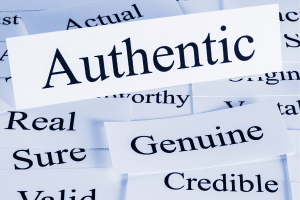
As a way to build trust, being authentic is right up there with any tactic you might read about.
By using imagery creatively and authentically, brands can connect with their audience on a deeper level, build trust, and stand out in today’s crowded marketplace. Think ‘behind the scenes’ photos, for example.
Remember, the key is to stay true to your brand values and connect with your target audience on an emotional level. Don’t be afraid to experiment and have fun with your visuals! Also, remember that staging a behind the scenes photo and passing it off as an everyday occurrence would not be truly authentic.
This applies not only to your use of images but to everything you do.
Put Your Wisdom into Action
Now that you know how important it is to ensure your images are high-quality and legally compliant, I urge you to sign up for one of the pro plans from the ‘Sourcing Licenced Images’ section.
It’s much easier than most people realise to ensure image compliance and avoid all the potential unpleasantness that will almost certainly come should you ignore it.
Using the pro libraries from whichever platform you decide to go with really is unbeatable value. Access to millions of high-quality and unique images to help you tell your story is worth much more than most people realise.
For property professionals, where trust is paramount, you now have another string in your bow to ensure you hit your target audience.
Play with your imagery, have some fun with it, and be safe in the knowledge that you’ll never have to worry about whether that photo you downloaded from Google Images is okay to use or not.
Get Creative
If you aren’t quite sure why you might need so many images, please review this post. There are 18 images, all of which needed to match some element of my post.
If you’d like to learn how to write content like this, it’s much easier than you’d think, then grab a copy of my book, Automated Property Leads Forever. In it, I take you through all the steps, from ensuring your website is ready to promote, all the way through to posts just like this one. There’s much more besides.



